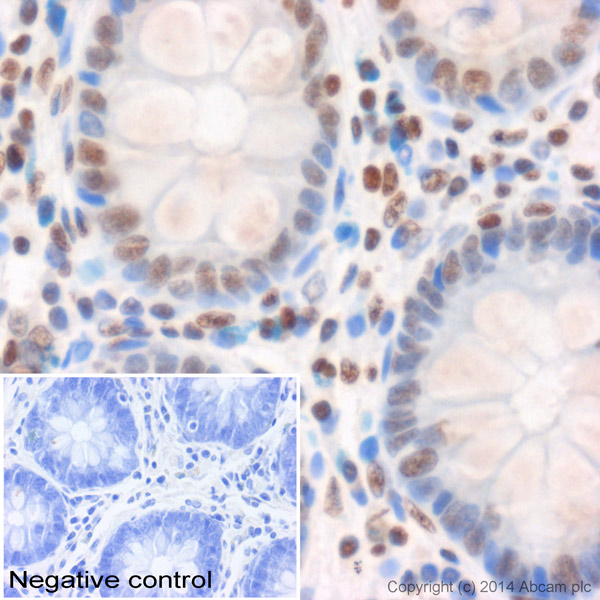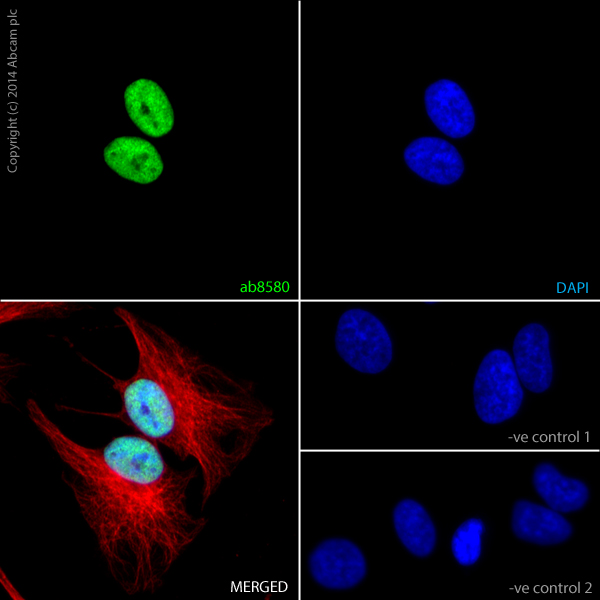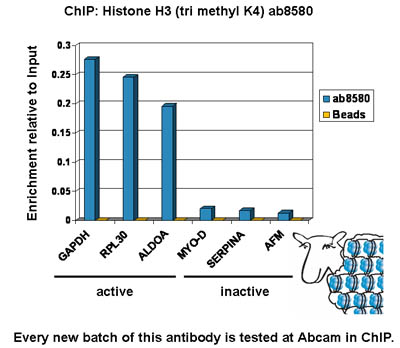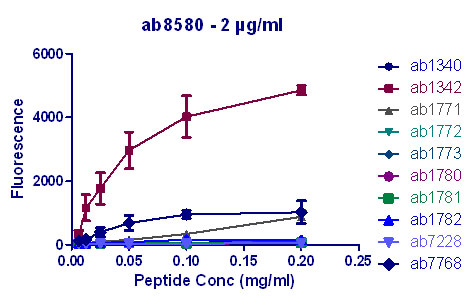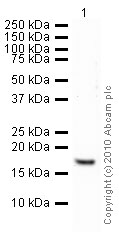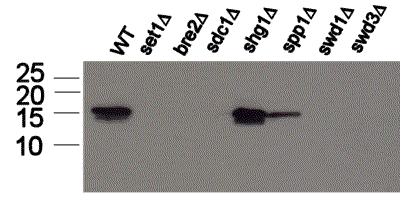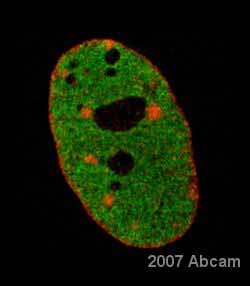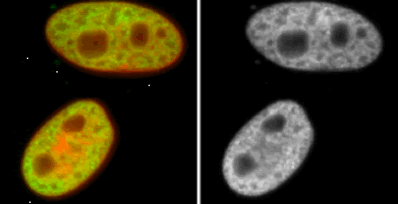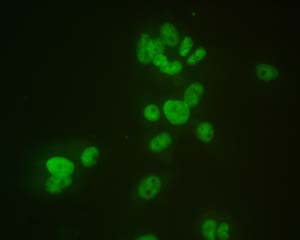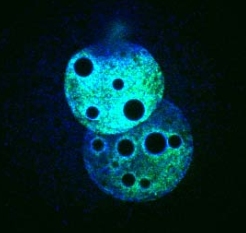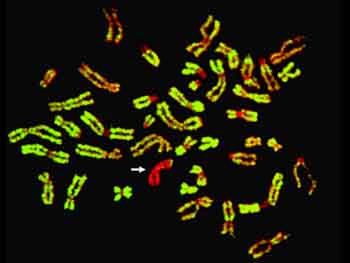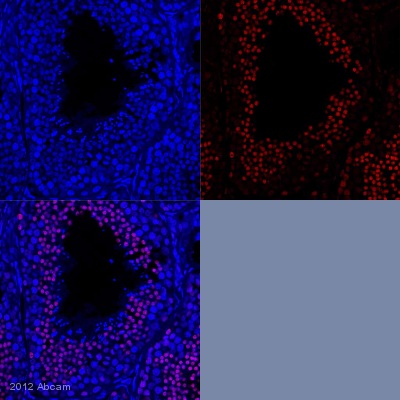Anti-Histone H3 (tri methyl K4) antibody - ChIP Grade
| Name | Anti-Histone H3 (tri methyl K4) antibody - ChIP Grade |
|---|---|
| Supplier | Abcam |
| Catalog | ab8580 |
| Prices | $404.00 |
| Sizes | 50 µg |
| Host | Rabbit |
| Clonality | Polyclonal |
| Isotype | IgG |
| Applications | ChIP ChIP Array ICC/IF ChIP WB IHC-F IP ChIPseq FC ICC/IF ICC/IF IHC-P |
| Species Reactivities | Mouse, Rat, Rabbit, Human, Pig, Yeast, Xenopus, Arabidopsis thaliana, C. elegans, Drosophila, Zebrafish, Marmoset, Rice, Bovine, Deer, Plant, Mammalian |
| Antigen | Synthetic peptide corresponding to Human Histone H3 aa 1-100 (tri methyl K4) conjugated to Keyhole Limpet Haemocyanin (KLH) |
| Description | Rabbit Polyclonal |
| Gene | HIST3H3 |
| Conjugate | Unconjugated |
| Supplier Page | Shop |
Product images
Product References
Small RNA profiling of Xenopus embryos reveals novel miRNAs and a new class of - Small RNA profiling of Xenopus embryos reveals novel miRNAs and a new class of
Harding JL, Horswell S, Heliot C, Armisen J, Zimmerman LB, Luscombe NM, Miska EA, Hill CS. Genome Res. 2014 Jan;24(1):96-106.
Suppression of intragenic transcription requires the MOT1 and NC2 regulators of - Suppression of intragenic transcription requires the MOT1 and NC2 regulators of
Koster MJ, Yildirim AD, Weil PA, Holstege FC, Timmers HT. Nucleic Acids Res. 2014 Apr;42(7):4220-9.
Effects of sulforaphane and 3,3'-diindolylmethane on genome-wide promoter - Effects of sulforaphane and 3,3'-diindolylmethane on genome-wide promoter
Wong CP, Hsu A, Buchanan A, Palomera-Sanchez Z, Beaver LM, Houseman EA, Williams DE, Dashwood RH, Ho E. PLoS One. 2014 Jan 22;9(1):e86787.
Broad shifts in gene expression during early postnatal life are associated with - Broad shifts in gene expression during early postnatal life are associated with
Lui JC, Chen W, Cheung CS, Baron J. PLoS One. 2014 Jan 28;9(1):e86957.
Mll2 is required for H3K4 trimethylation on bivalent promoters in embryonic stem - Mll2 is required for H3K4 trimethylation on bivalent promoters in embryonic stem
Denissov S, Hofemeister H, Marks H, Kranz A, Ciotta G, Singh S, Anastassiadis K, Stunnenberg HG, Stewart AF. Development. 2014 Feb;141(3):526-37.
Role of histone modifications and early termination in pervasive transcription - Role of histone modifications and early termination in pervasive transcription
Castelnuovo M, Zaugg JB, Guffanti E, Maffioletti A, Camblong J, Xu Z, Clauder-Munster S, Steinmetz LM, Luscombe NM, Stutz F. Nucleic Acids Res. 2014 Apr;42(7):4348-62.
Essential role of lncRNA binding for WDR5 maintenance of active chromatin and - Essential role of lncRNA binding for WDR5 maintenance of active chromatin and
Yang YW, Flynn RA, Chen Y, Qu K, Wan B, Wang KC, Lei M, Chang HY. Elife. 2014 Feb 12;3:e02046.
Nuclear compartmentalization of odorant receptor genes. - Nuclear compartmentalization of odorant receptor genes.
Armelin-Correa LM, Gutiyama LM, Brandt DY, Malnic B. Proc Natl Acad Sci U S A. 2014 Feb 18;111(7):2782-7. doi:
Principles of nucleation of H3K27 methylation during embryonic development. - Principles of nucleation of H3K27 methylation during embryonic development.
van Heeringen SJ, Akkers RC, van Kruijsbergen I, Arif MA, Hanssen LL, Sharifi N, Veenstra GJ. Genome Res. 2014 Mar;24(3):401-10.
A KRAS-directed transcriptional silencing pathway that mediates the CpG island - A KRAS-directed transcriptional silencing pathway that mediates the CpG island
Serra RW, Fang M, Park SM, Hutchinson L, Green MR. Elife. 2014 Mar 12;3:e02313.
